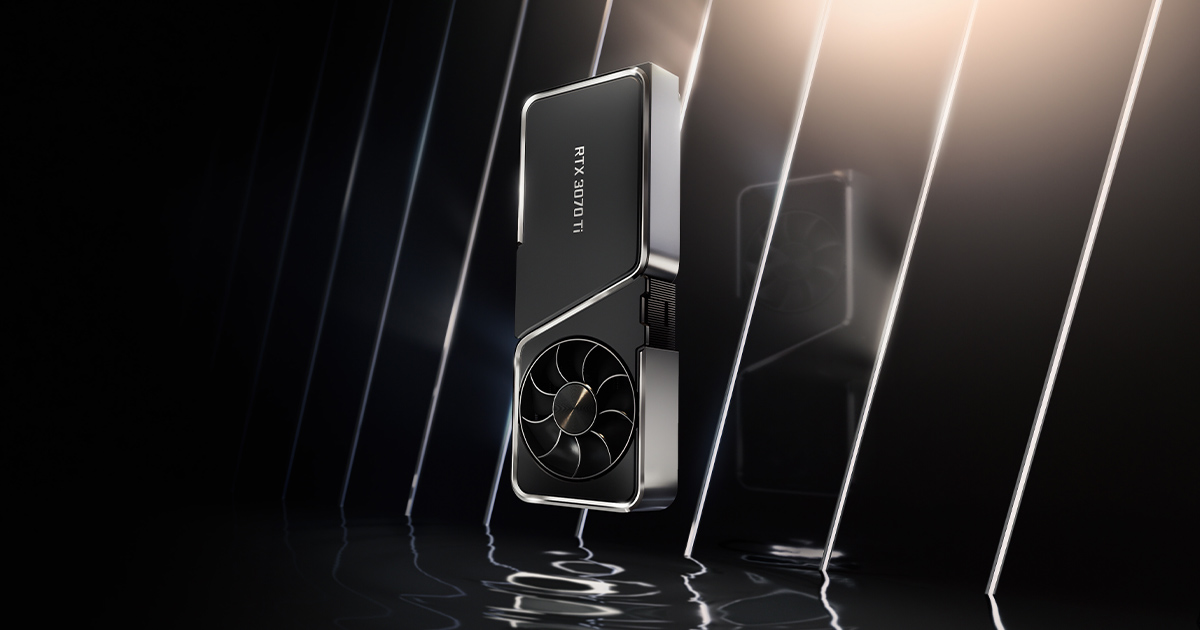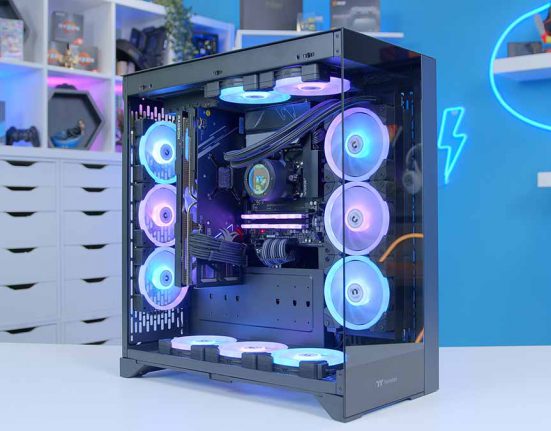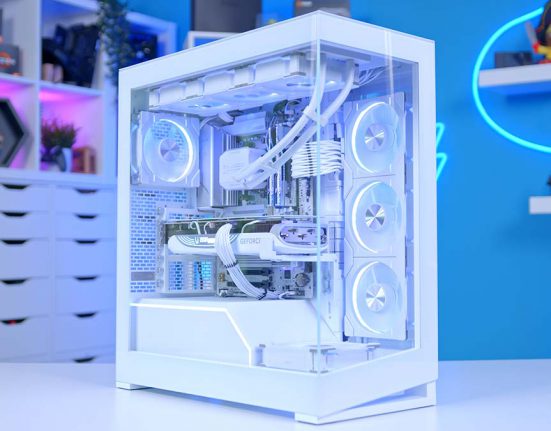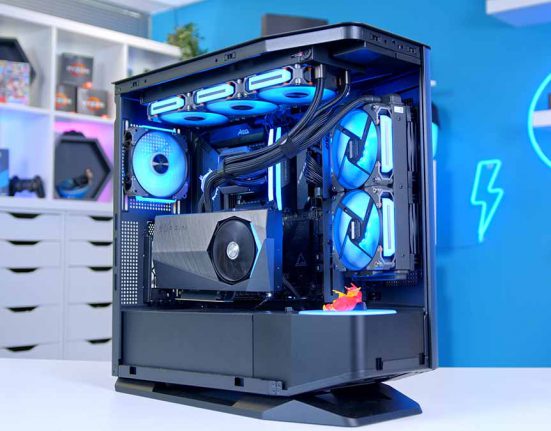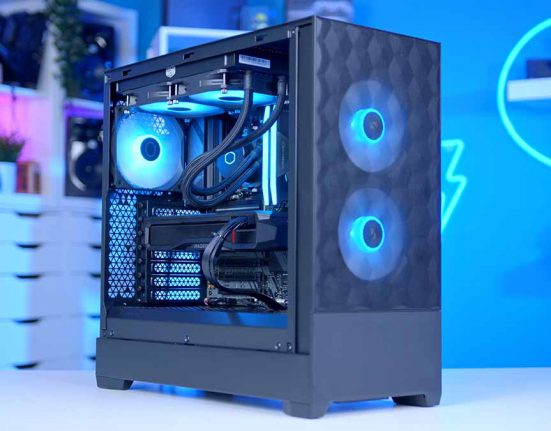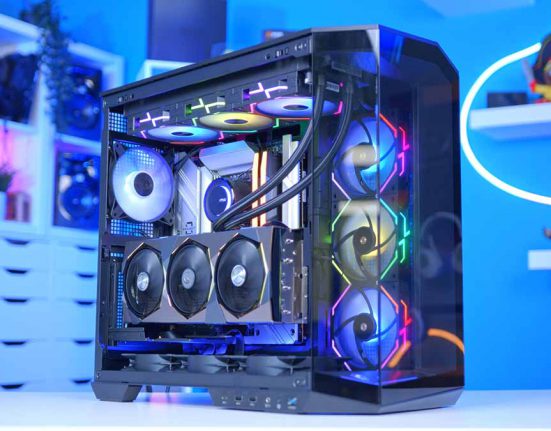Introduction
As the GPU market starts to return to normal, more people than ever are considering picking up an RTX 3000-series GPU. The gaming community has waited more than 18 months for GPU stock levels to rise, and prices closer to MSRP levels – but could a rumoured new release throw a spanner in the works?
The rumour mill has been heating up about Nvidia‘s next line-up, dubbed ‘Lovelace’, and the 4000-series line-up appears closer than previously thought. It creates a quandary for gamers – buy a current-gen GPU and risk it becoming (quickly) out-of-date, or hold off and buy a GPU that might suffer the same stock woes as RTX 3000?
Suggested Article: Nvidia RTX 4000 Roundup
What We Know So Far
According to Moors Law is Dead, the cards could come equipped with GDDR7 memory controllers – a big potential upgrade over the current gen GDDR6X standard. This would allow for an increase in memory bandwidth – one of the big constraining factors for graphics card performance. It’s unclear whether Lovelace GPUs will ship with GDDR7 memory, but it seems unlikely. Nvidia is yet to realise the full bandwidth of the GDDR6X standard, and for lower-end cards, such as the RTX 3060 and 3060Ti, the new memory chips themselves would likely be too prohibitively expensive to implement. It is also unclear whether GDDR7 supply could even scale quick enough to meet GPU demand – and we all know how shortages impact supply, and push prices upwards.
The controller, if included, may be to allow for GDDR7 versions of GPUs later down the line – or to facilitate ‘Ti’ or ‘Super’ line-up releases at a later date. The move could also be implemented to protect against AMDs approach with their next-gen line-up – Nvidia won’t want to be seen with their pants down should AMD opt for the new memory standard, and they are unable to respond.
The leaks also shed light on the CUDA cores, SMs and amounts of Level 2 cache likely to feature in the next generation of GPUs. According to the leaks, the line-up from Nvidia will be made up of chips ranging from the AD102 to AD107. The AD107 chip is likely to makeup the RTX 4080 & 4090 cards, and shows impressive spec gains over the current Ampere equivalent, the GA102. With more than 70% more CUDA cores and SMs, and a whopping 50x the amount of L2 cache, the sheet makes very impressive reading at first glance.
It is worth noting that the specs quoted on these new chips, if accurate, are likely to represent the upper capabilities of the individual GPU chips, and not necessarily the level of usable spec likely to appear on all tiers of consumer GPUs. This can be most visibly seen in the current-gen GA102, a chip which makes up a whopping 4 graphics cards: the RTX 3080, 3080Ti, 3090 & 3090Ti.
| GPU | CUDA Cores | SMs | Memory Bus | L2 Cache |
| AD102 | 18432 | 144 | 384 bit | 96MB |
| AD103 | 10752 | 84 | 256 bit | 64MB |
| AD104 | 7680 | 60 | 192 bit | 48MB |
| AD106 | 4608 | 36 | 128 bit | 32MB |
| AD107 | 3072 | 24 | 128 bit | 32MB |
For comparisons sake, the below table shows the makeup of Nvidia’s existing, RTX 3000-series Ampere GPUs. You can see that many of these specs are similar to the specs of the (rumoured) lower end cards from the new generation. This lines up with a pattern we often see, where manufacturers take the spec from last generations more powerful card, and drop it down to a lower, more affordable level. It is for this reason that an RTX 3060 will perform similarly to an RTX 2070, and why current generation, budget GPUs provide similar performance levels to the range topping, $1000 GPUs from a couple of years ago.
| GPU | CUDA Cores | SMs | Memory Bus | L2 Cache |
| GA102 (RTX 3080 & above) | 10752 | 84 | 384 bit | 6MB |
| GA103 (RTX 3060Ti & notebook 3080Ti) | 7680 | 60 | 256 bit | 4MB |
| GA104 (old RTX 3060Ti’s & RTX 3070Ti) | 6144 | 48 | 256 bit | 4MB |
| GA106 (RTX 3060) | 3840 | 30 | 192 bit | 3MB |
| GA107 (RTX 3050) | 2560 | 20 | 128 bit | 2MB |
Which RTX 4000 Cards are Likely to Launch First?
Like all GPU releases from Nvidia (and AMD for that fact), it is likely Nvidia will launch the high end cards first, with more budget and mid-range cards following at a later date. For RTX 3000 series, Nvidia released the RTX 3070, RTX 3080 and RTX 3090 cards to begin with, following up with the RTX 3060Ti shortly afterwards, and budget cards last up.
This is done to extrapolate the highest margin possible from the architecture to begin with, and increase yields in production – something which in turn reduces production costs, and allows for budget cards to be more feasible. It also allows early adopters to get range topping performance, before the generation hits the mainstream – allowing chip producers like TSMC and Samsung to scale production, too.
This could throw a spanner in the works for those looking at next-gen budget options, most of which could still be 18 months or more away. The exact release schedule is likely to be the biggest factor for those considering waiting for Nvidia’s next-gen line-up. It is possible Intel could throw a spanner in the works, as they look to launch their mid-range cards – a move which could trigger a response from Nvidia, and change their usual release roadmap. We are pretty confident, though, that Nvidia is unlikely to replace the 3050 or 3060 anytime in the next few months.
A GPU you Can Buy, is Better than One you Cannot.
It might sound obvious, but the best GPU out there is the one you can actually buy. Gamers who held out for RTX 3000 series in 2020 got stung, as while new cards provided phenomenal performance, they were out of stock and unaffordable for so long. Choosing to wait incurs a natural risk that you could end up with no GPU at all. While it is unlikely RTX 4000 will present the same stock woes as RTX 3000 series, the first few months may certainly be turbulent.
This argument is also influenced by just how good the current generation offering is. If the current RTX 3000 cards provided underwhelming performance, it would certainly make sense to wait – but they don’t. The 3000 series provided the biggest boost in GPU performance we have seen in a long time – something which will feel particularly pronounced for gamers currently rocking a 10-series GPU or older.
Are the New Cards Worth Waiting For?
In all honesty, this is something which can only be decided by you. In our view, it also depends what card you’re looking to upgrade from. If you are rocking a GTX 750Ti or GTX 1070 the decision is an easy one – buy an RTX 3060 or 3070 and you’re likely to be blown away by the performance gains. Similarly if you’ve been stacking up a card like the RTX 3050, now is perfect time to buy.
If, however, you are boasting an RTX 2080Ti or similar, then it might be worth waiting out to see what Nvidia and AMD have to offer this year, as an RTX 3080 is unlikely to provide a life changing performance gain.


